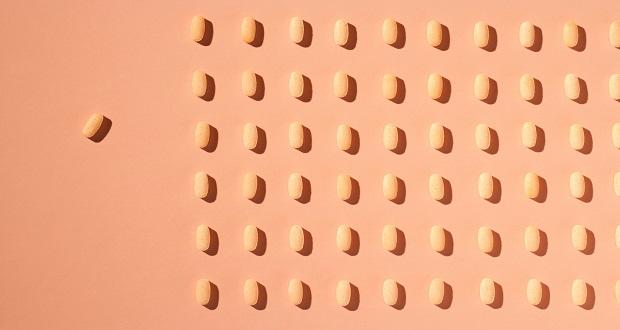
Bias, racism, and xenophobia can permeate into our psyche and well-being. Think of it like this: within each of us is a 54 block-solid Jenga structure that supports our self-confidence throughout life. D&I practitioners do their best to offer organizations and communities the best researched practices and resources to defeat bias, racism, and xenophobia but sometimes, automatic negative thoughts (ANTS) are difficult to change.
So, how do you win with a game of Jenga? To start winning, you must recognize non-inclusive messaging, defend your confidence, and support your structure with positive messages.
So, how do you win with a game of Jenga? To start winning, you must recognize non-inclusive messaging, defend your confidence, and support your structure with positive messages. Share on XWhen your internal voice speaks to you about you, is it kind? Negative thoughts and beliefs are the jabs to our self-esteem that push out our confidence (aka blocks) and replace the spaces with negative energy and a hollow structure. Self-confidence is not lost forever, but in Jenga we cannot place blocks back in their original space. Instead, they‘re “placed” at the top of our structure to deal with later. What happens when we allow “automatic negative thoughts” to ruminate and replace a once solid structure?
Automatic Negative Thoughts (ANTs) are the internalized perceptions that one may have about themselves that perpetuate a non-inclusive or disparaging belief about their worth—particularly in comparison to their peers. ANTs disturb solid confident structures when combined with bias, racism, and xenophobia. An “unstable structure” could be likened to feelings of hopelessness and defeat and can contribute to chronic stress and anxiety. ANTs push out valuable space for positive, affirming, inclusive messages and jab at our self-confidence. They literally deplete the neurotransmitters of serotonin and dopamine in the brain and leave negative energy or “hollow spaces” in our self-confidence. They also increase the size of the amygdala, which controls the brain’s fear center. Multitudes of ANTs can push out the valuable space that once held our confidence and healthy beliefs intact.
Recognize the ANTs:
My friend’s preschool daughter recently started questioning the beauty of her natural African-American hair. She loves princesses and wants to emulate the princesses she sees and pretends to be during playtimes at school. Recently, she has begun questioning the beauty of her own hair. Can she be a princess without straight hair? Can she look in the mirror with her mother and admire their thick, curly hair? After only one year in pre-school, American society’s beauty standard has already impacted her self-esteem and caused her to label her own beauty as wrong. Put differently, she has already lost a “brick” of confidence. It will take time and intentional affirmation for her parents and community to repair the gaps (the meaning of beauty) and support her in developing a newly constructed self-confidence.
Defend your self-confidence:
Another friend’s daughter was in kindergarten when she told her mother that she thought she was too fat when looking at her class pictures. Her parents are both Caucasian American and are tall. They lived in a primarily Asian and Latino neighborhood, which was reflected in her petite classmates. Her belief that she was fat was a jab to her self-esteem. As a young Caucasian American female, she had internalized this message and now had a “hollow” space in her self-confidence. Just as my aforementioned friend’s preschool daughter, she will need to defend her self-confidence and fill those spaces with narratives that affirm who she is and how she looks.
Support your self-confidence with positive messaging:
My African-American niece was four when she recognized race. One day my niece said that she didn’t like black people “because she is yellow (her understanding of lighter skin), and her grandma, mommy, and auntie are yellow.” I know that my niece loves her family, including those members who are darker than “yellow,” and so we challenged her a bit with an age appropriate question. “What about your Uncle Mel? Uncle Mel is black. Is Uncle Mel bad?” She thought for a bit and replied, “Well I like chocolate, and Uncle Mel is not black. He is chocolate.” A 450-year old race narrative seeped into my niece’s understanding of self-worth and resulted in her perfectly solid tower becoming less stable. She may not realize it yet, but her assessment about the acceptance of individuals based on color is internalized messaging that suggests black is less than white. As an African-American family, we have the responsibility of stabilizing her self-confidence around race and focusing on positive messages around her racial identity.
Just like these three young girls, as we age, we define our internal beliefs. We remove old beliefs about ourselves and replace them with new beliefs, which impact our self-confident structures, just like these three young girls. This is what happens when we unknowingly internalize too many unhealthy beliefs and messages.
So, how do you win at the game of Jenga? The trick is to never push out a block. Embracing our uniqueness is like a game of Jenga, you are only successful when the structure remains standing and intact, so everybody wins. The tower’s structure can only remain if those jabs, slights, snubs, racism, biases, and xenophobia never get the chance to push out critical blocks and compromise the structure. Life happens, however, and sometimes those subtle messages come through. We can stay in the game longer by identifying the ANTs, defending our tower, and working to support our self-confidence with positive messaging.
Embracing our uniqueness is like a game of Jenga, you are only successful when the structure remains standing and intact, so everybody wins. The tower’s structure can only remain if those jabs, slights, snubs, racism, biases, and… Share on X


















I enjoyed this reading Femina, and what a great analogy to Jenga!
I really like the analogy of a game of Jenga — those hollow spaces start at such a young age, before we have the ability to recognize the negative self-talk and consciously address it. Your examples are powerful, and show us how easily they can take root. Thanks for the thoughts.
Your message intrigues me and aligns with my observations and experience. The struggle between positive and negative energy within us is a constant battle, and there is no doubt that the bias, racism, and xenophobia in the world around us makes it difficult to foster the well-being that comes with repelling the negative and maintaining positivity. In my experience, positive energy attracts positive energy and negative energy attracts negative energy. Our success in overcoming the triggers of our ANTS is driven by the stability of our personal JENGA.
The concept of how the ANTS form in our youth is very interesting and clearly challenges us throughout our lives. We want to help our children lead healthy lives (childhood and adulthood). Being a bit of an analytic myself, it makes me feel that we need to “measure” our ANTS and those of our children. We can’t manage what we don’t measure. It is important that we bring what is in our subconscious to the conscious where it can be seen. As parents, we don’t want to avoid the conversations with out children, but actively look for them so we can help our children as their brains develop.
Look forward to having conversations with you to learn more from your perspective on this. Everyday is an opportunity to learn through others. 🙂
Thanks Femina!
Wonderful article that really cuts to the heart of how we need to embrace how unique we are, as our actions and words influence the young lives around us. Extremely powerful message.
Thank you all for your wonderful insights!